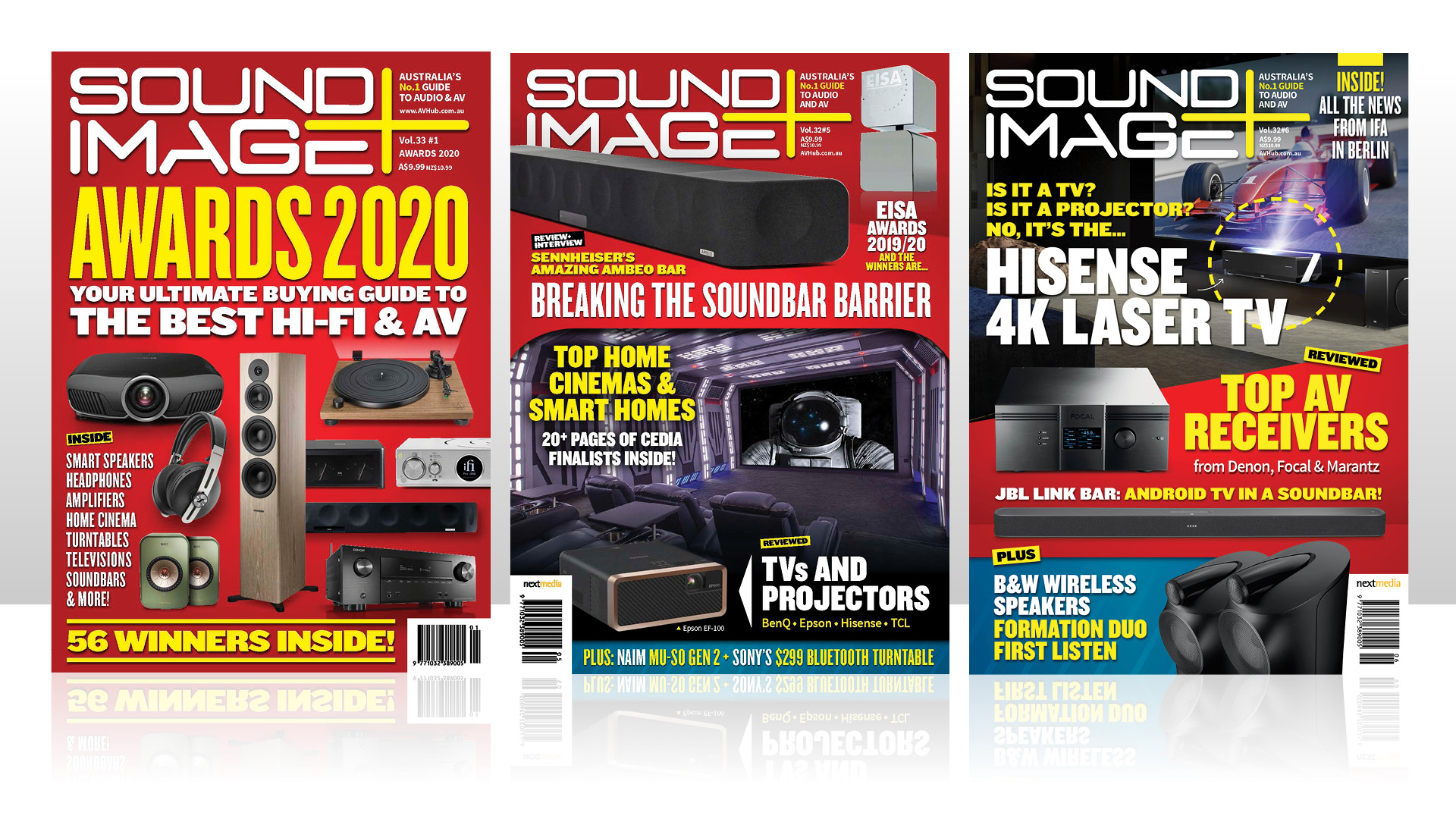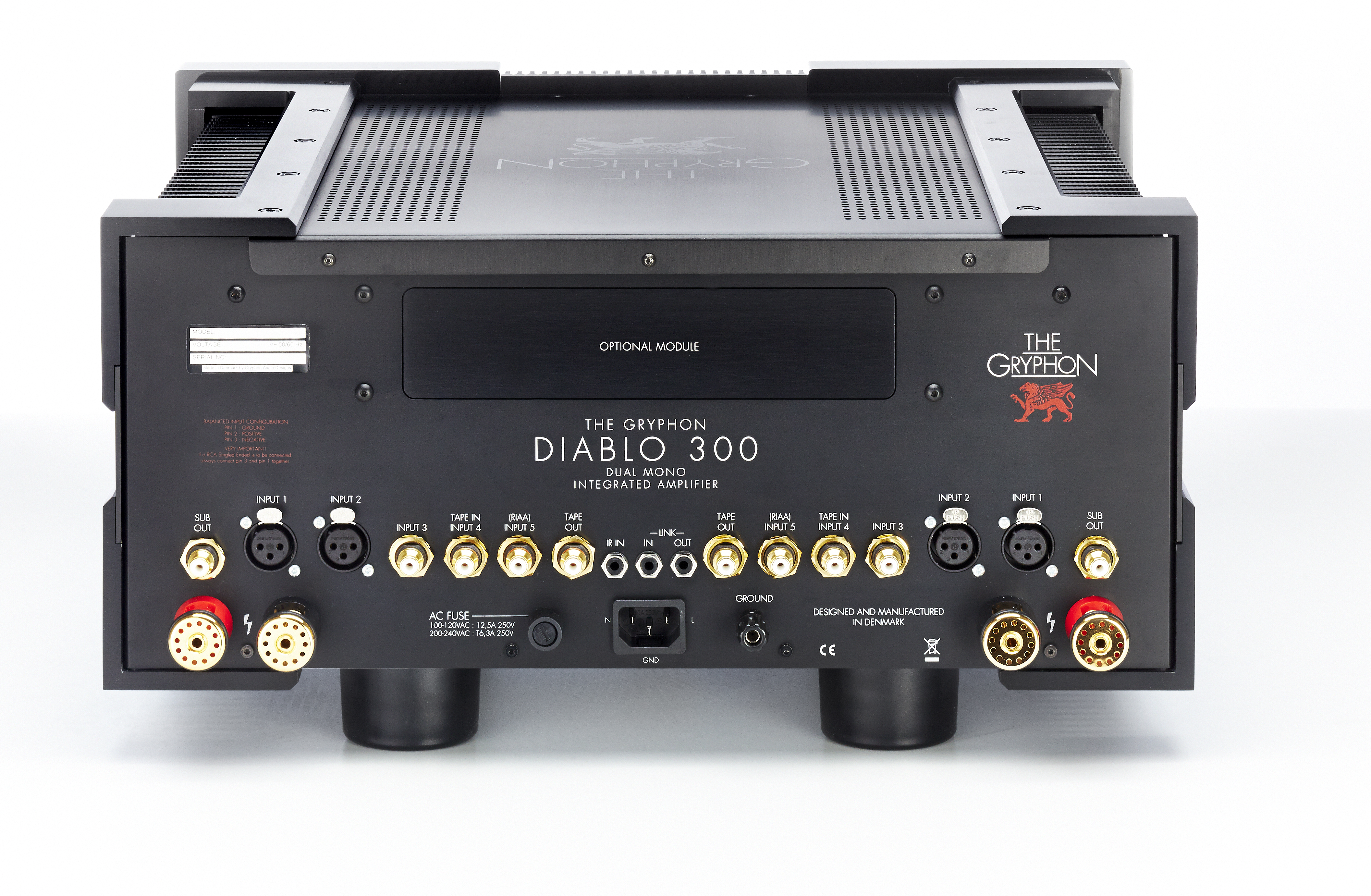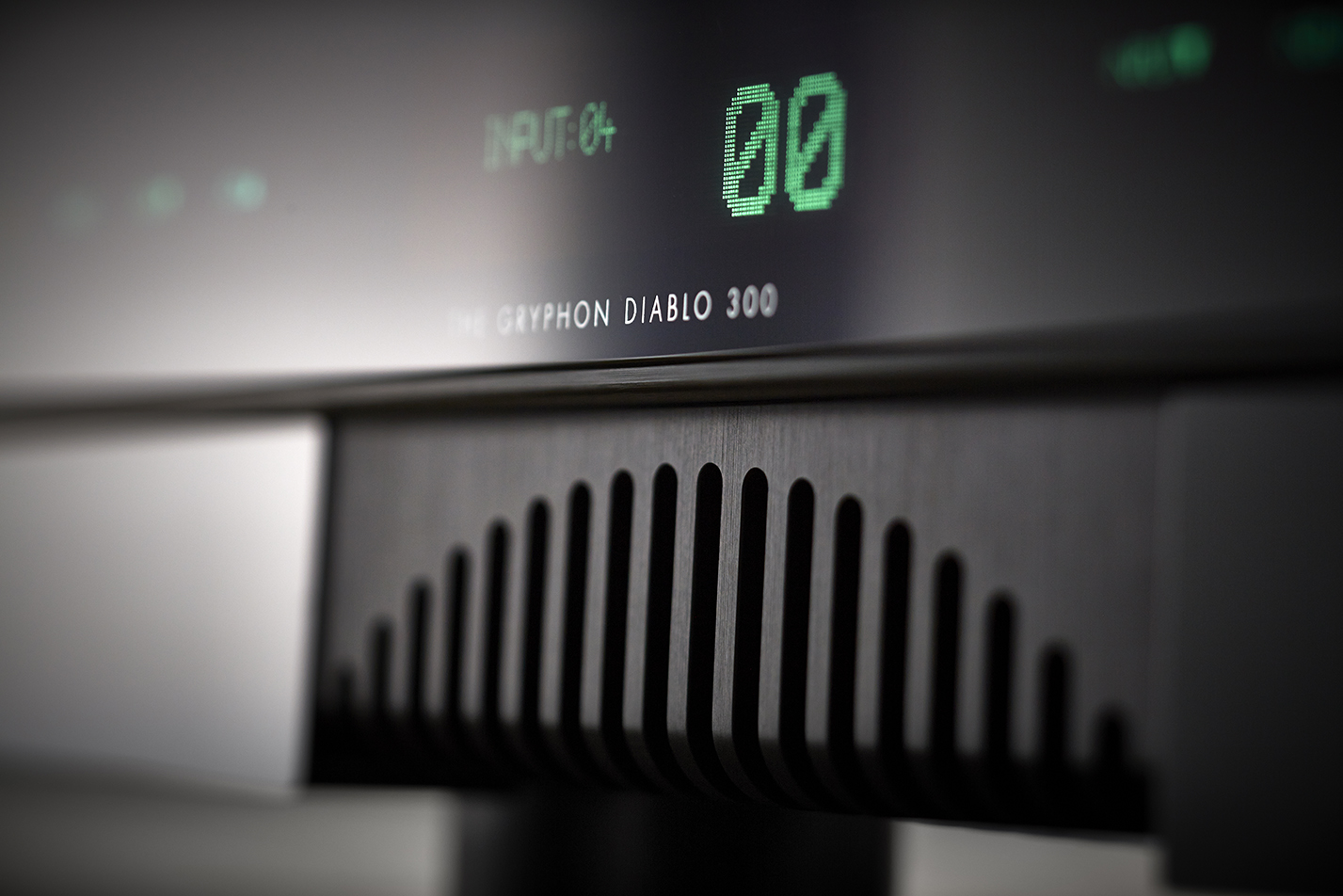Sound+Image Verdict
Simply one of the best integrated amplifiers at any price ever to grace our listening rooms.
Pros
- +
Total control of even complex music
- +
Tonally invisible
- +
Loves music of all varieties
Cons
- -
Nothing
Why you can trust What Hi-Fi?

This review originally appeared in Sound+Image magazine, one of What Hi-Fi?’s Australian sister publications. Click here for more information on Sound+Image, including details on how you can subscribe.
It wasn’t that long ago the upper echelon of high-end amplification was the exclusive domain of separate preamplifier and power amplifier partnerships. More recently, however, evolved electronics component quality, advanced surface mount topologies and the benefits of CAD-assisted engineering have all contributed to a stream of high-end products which integrate the preamplifier and power amp stages, making a convincing – even seductive – impact in the high performance audio space. Strong affirmation of this trend is evident within the pages of our previous issue (Audio Esoterica issue #4, Winter 2015) which featured several variations of the high-end integrated amplifier from various manufacturers across the globe.
The traditional approach to the integrated amplifier has been to combine a line signal switching stage with level control and an amplification stage. Simple and effective. That purist approach is enduringly valid; however, in the 21st century the humble ‘integrated’ has developed multi-tasking skills. Further duties have been allotted in order to simplify the signal chain and minimise the box count with a growing number of models now sporting built-in digital-to-analogue converters and high quality phono stages. The real clever designs, like our review subject here, the spanking-new Gryphon Diablo 300, features slots that accept the added functionality of optional modules. In the case of the Diablo 300, Gryphon offers high quality MM/MC phono and multi-input digital stage (DAC) modules which can be ordered in situ or purchased at a later date, as funds allow.
Devilish beast
The Diablo 300’s heritage harks back to the first high-end integrateds seen in the industry, with a pedigree stemming from a multi-award-winning lineage. The original Diablo was considered by many to be the high-end integrated amplifier.
The new model has been cosmetically revised in-keeping with the Gryphon look (it bears some stylistic resemblance to the company’s Mephisto power amplifier) while substantial circuit upgrades and refinements have resulted in operational efficiencies and potential sonic improvements.
As the model name states, the Diablo 300 is a 300-watt per side Class-A/B DC-coupled amplifier (doubling to 600 watts into 4 ohms and providing 950 watts into 2 ohms). Its heatsinks span the entire side panel length, and run warmish, indicating a rather high bias scheme, something that adheres to Gryphon’s Class-A amplification ideology as evidenced in its upper-echelon power amplifier offerings. Also in line with company philosophy, the amplifier is a zero negative feedback design in a true dual-mono configuration. And the power supply is rather massive with a large capacitor bank providing a total of 136,000 micro-farads of storage energy, flanking a large custom toroidal transformer. Combine that with a low 0.019-ohm output impedance and, on paper, you’re looking at good speaker control potential. The bandwidth is wide and spans the range from 0.1Hz to 350kHz, while the amp’s gain is +38dB.

The connectivity count on the rear panel will allow for any system configuration. The input selection features two balanced Neutrik XLR and four unbalanced RCA options (one is configurable to phono if the MM/MC module is installed, and Input 3 can be assigned as a HT pass-through) while outputs include a +12dB subwoofer output (can also be used to connect an additional power amplifier) and tape out. A 12V mini-jack trigger in/out suite of connectors provides remote control to other Gryphon products and a further mini-jack input allows the connection of an external infrared receiver. A ground post is provided. Gryphon’s custom speaker binding posts are among the best in terms of user friendliness (tightening ease) and overall quality. A centrally-placed IEC socket rounds out the connections complement.
The front panel is a mix of metal and black acrylic – another Gryphon style trademark – and features a cross panel that houses the large vacuum fluorescent display. A large numeric display shows the volume setting, which is micro-processor controlled, in fine 43 steps and is flanked by an input selection icon. A row of small green-lit touch-buttons on either side provide visuals for standby mode, volume up/down, input selection, system status monitoring and menu access. This last item allows a certain level of programming and feature control such as input nomenclature, turn-on and maximum volume setting, input level matching, display level adjustment and more. The Diablo 300 is software upgradeable. A superbly-designed remote control ‘stick’, for lack of a better descriptor, provides standby on/off, input access, muteand, of course, volume control while a neat triangular stand allows table-top operation.
The latest hi-fi, home cinema and tech news, reviews, buying advice and deals, direct to your inbox.
Packaging is also a reflection of a company’s attention to detail. The Diablo 300 comes in a wooden crate featuring collapsible walls held by a cunning plastic clip system strong enough to support the substantial weight. Unclipping and dismantling the crate is child’s play and allows easy access to the amplifier inside. The package includes a nicely bound manual, white gloves to prevent scratching the fascia’s acrylic (this is further protected with a plastic film) and a polishing compound.
The Diablo 300 is a superb example of thorough engineering and peerless construction quality. Everything about it is pure class, from the black anodised heavy gauge metal work to the beautifully-polished and machined black acrylic, to the overall Gryphon-esque aesthetic – a stunningly arresting design the brainchild of Gryphon’s talented founder and industrial designer Flemming E. Rasmussen.
The unit provided for review was part of an early Australian shipment and did not feature the optional phono stage and DAC modules. We’re told Audio Esoterica may be the first publication to review this significant product.

Devil in the details
Schlepping the near-40kg black mass of metal into place was no mean feat, but once it was on an isolation platform and hooked up we were ready to go. I ran the amp for three days prior to serious auditioning and continued to run it overnight during the first phase of the evaluation period.
It’s a rare occurrence where a product makes a significant mark from the get-go. The Diablo 300 was one such beast. Few amplifiers – and yes, that refers to amplifiers, not just those of the integrated variety – have profoundly impressed as much as the Diablo 300 has upon first firing it up. That first track was so powerfully presented, so strongly communicated, that I found myself smiling in blissful stupor as I listened. From that first unequivocal statement and on for the duration of the auditioning period of several weeks, the amp exhibited a level of dynamic explosiveness and absolute control over my Wilson Alexia speakers that I saw it necessary to recalibrate previously-held perceptual benchmarks in those aspects of music reproduction.
But as overt as the Diablo 300 was in terms of its dynamic power, it’s not all about brute force. The entire presentation across the important midrange and high frequency spectrum was one of refinement, resolution and superb microdynamic detail retrieval.
Ergo the classic “Take Five” as interpreted by percussion virtuoso Joe Morello in his Morello Standard Time CD. The intro drum solo is very accurately recorded and the Gryphon integrated punched through the entire drum set, from kick through to toms and on to the snare, in an extraordinarily potent way. This is dynamic power at its most confronting which, with the appropriate full-range speakers and the Diablo 300 at the helm, will absolutely floor you. Guaranteed. But then, as the drum explosions subside, the sax and bass accompaniment lead on to fluid and tonally precise… music… with superb separation and deep instrumental detail retrieval.
Renaud García Fons’ renowned bass dexterity and virtuosity is nothing but an absolute visceral delight when heard via the Diablo 300. It’s exemplary from the lowest depths to the instrument’s highest notes in terms of control, weight, tonal rendition and transient attack.
The cinematic soundscapes of In a Time Lapse from Ludovico Einaudi’s CD release illustrated the Gryphon’s valve-like handling of tonal colours. This recording is rich with piano, violin and guitar, among other acoustic instruments, and the Diablo 300’s reproduction of the beautiful and moving compositions displayed natural and complex midrange timbre, with all the instruments having a sense of presence both in terms of transparent verisimilitude and that hard-to-describe sense of body… of image gravitas. That midrange kinship with the very best of valve amplification is something rather extraordinary for a solid-state amplifier – an integrated no less.
Roger Water’s Amused to Death release is a Q-Sound extravaganza and features dense mixes filled with low-level information, both musical and in spoken word (even distant barking dogs). The Diablo 300’s resolving power allowed clear discernment of the minutest of details but all is presented in a natural manner. In other words, some components are able to resolve incredible detail by featuring, to different extents, a somewhat forward or overt presentation. The Diablo 300, on the other hand, is expertly balanced to sound natural without undue highlighting or exaggeration. And all this is offered in a soundscape of massive dimensions both laterally and in the depth perspective.

Verdict
The Diablo 300 is attractively styled with mucho macho Gryphon panache; it is well-featured, beautifully constructed and thoroughly engineered by skilled personnel in Gryphon’s native Denmark. Its uninhibited dynamic expressiveness, its superb resolution in conjunction with its midrange beauty and treble sweetness, and its overall musical adeptness make the Diablo 300, even at its price, a high-end integrated that should sell like oven-warm bread to ravenous audiophile hordes.
Please allow me to further personalise this conclusion – a somewhat rare thing for this writer who seldom risks sounding over-enthused… so far, the Gryphon Diablo 300 is unequivocally, and by a wide margin, the best integrated amplifier ever to grace our audio testing and music-listening environment.
Sound+Image is Australia's no.1 mag for audio & AV – sister magazine to Australian Hi-Fi and to the UK's What Hi-Fi?, and bestower of the annual Sound+Image Awards, which since 1989 have recognised the year's best hi-fi and home cinema products and installations. While Sound+Image lives here online as part of our group, our true nature is best revealed in the print magazines and digital issues, which curate unique collections of content each issue under the Editorship of Jez Ford, in a celebration of the joys that real hi-fi and high-quality AV can bring. Enjoy essential reviews of the most exciting new gear, features on Australia's best home cinemas, advice on how to find your sound, and our full Buying Guide based on all our current and past award-winners, all wrapped up with the latest news and editorial ponderings. Click here for more information about Sound+Image, including links to buy individual digital editions and details on how best to subscribe.


